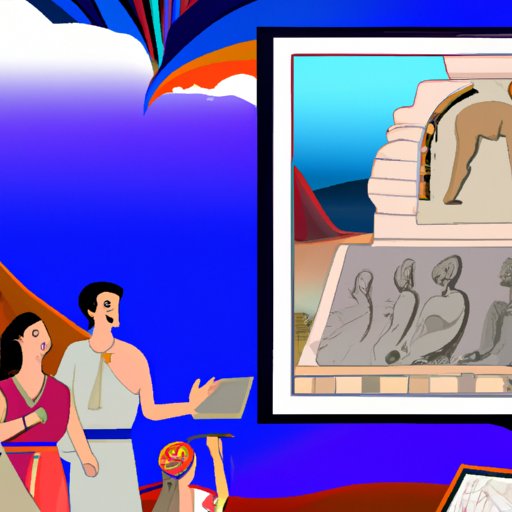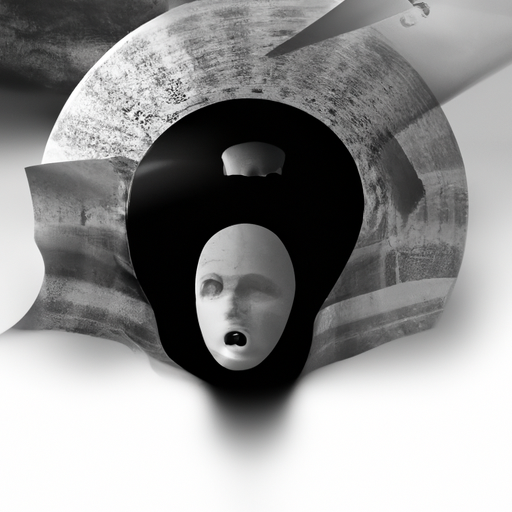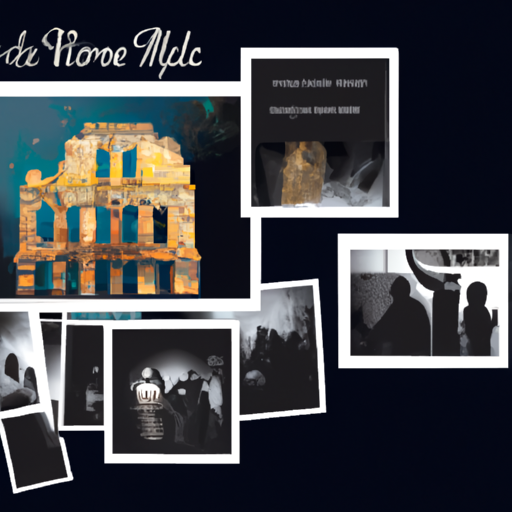The History of the End of Vikings: Why Do They No Longer Exist?
Uncover the mysterious past of Vikings and discover why they have vanished from the face of the earth! Delve into their annals to uncover clues as to why these seafaring warriors no longer roam the seas. Unearth secrets that may answer questions about their disappearance. Was it by choice or were they driven away? Unravel the mysteries of these brave people and learn why they are no longer around.

A mysterious people of the northern seas, the Vikings roamed from the 8th to 11th centuries, renowned for their seafaring prowess and ferocity in battle. Yet, what caused their abrupt disappearance? Examining their past may provide some answers.
In the 11th century, Viking raids and conquests began to wane. This could be attributed to increased opposition of other nations or a shift towards more peaceful pursuits such as trade and exploration. Climate change is also thought to have played a part, with the warm weather making it harder for them to survive in the frigid Atlantic waters.
It is uncertain why these valiant people vanished from history’s pages; however, by studying evidence left behind, we can attempt to understand what happened and why they are no longer around today.
.
Introduction

A period of time shrouded in mystery, the Viking Age spanned from the late 8th century to the mid-11th century. During this era, Norse people, more commonly known as Vikings, colonized and explored various parts of Europe and beyond. But by the 11th century, their culture had all but vanished. Causes for this sudden disappearance are numerous and varied; political power structures shifted, religious beliefs changed, and economic activities altered. By the closing of the Middle Ages, Viking culture was no longer a dominant force in Europe.
– The History of Viking Decline
As an enigmatic seafaring culture, the Vikings’ reign of power from the late 8th century to the mid-11th century was brought to a close by a number of factors. Chief among them was the spread of Christianity, which replaced many Norse gods with Christian beliefs, thus weakening their sense of identity. Political strife in Scandinavia also had an effect, as civil wars weakened many large kingdoms that had previously supported Viking exploration and settlement. Additionally, environmental changes such as colder temperatures and new diseases made it harder for them to survive off fishing and farming alone. All these forces combined to bring about the end of Viking dominance over much of Europe by the mid-11th century.
– How Historical Events Shaped the End of the Viking Age
A time of great tumult and transformation, the Viking Age was a period of Scandinavian expansion that began in the 8th century and concluded in the 11th. During this era, Vikings spread far and wide across Europe, engaging in raids and commerce with various cultures. The conclusion of this epoch was marked by several momentous occurrences that drastically altered the course of history.
One such event was the Christianization of Scandinavia. In 994 AD, King Olaf I of Norway converted to Christianity, setting a precedent for other Scandinavian rulers to follow suit. This shift resulted in an erosion of pagan customs and beliefs as Christianity gained traction among the population. Furthermore, its values often clashed with those held by the Vikings, leading to a decline in Norse influence throughout Europe.
The Norman Conquest in 1066 AD also had a significant impact on ending the Viking Age. Led by William I (the Conqueror), Norman forces invaded England and overthrew Anglo-Saxon rule. This conquest weakened ties between Scandinavia and England while simultaneously granting Norman rule precedence over traditional Viking practices and ideals.
Lastly, internal conflict among Scandinavian leaders during this period also contributed to the end of the Viking Age. As various regions were brought under different rulerships, tensions between rival factions increased resulting in civil wars and other conflicts within Scandinavia itself. These struggles weakened Norse nations until they were unable to maintain their power or authority abroad, thus bringing about their downfall as a major European force.
Thus ended an era that had been dominated by Norse culture and beliefs; through understanding these key moments in history we can gain insight into how our past has shaped our present day world today
– The Impact of Christianity on Viking Culture and History
A deep and perplexing transformation was brought about by the advent of Christianity to the Viking world during the 900s. As they settled into Europe, their lives and interactions with other cultures were drastically altered. The polytheistic religion that had been practiced prior to the introduction of Christianity was quickly replaced by a faith in one God, with laws being passed forbidding any form of pagan worship.
The impact of Christianity on politics and warfare was also significant; whereas before raids had been conducted without regard for morality or ethics, now warriors were bound by Christian teachings, leading to more regulated violence as well as an increase in diplomatic relations between different peoples. Art and literature from this period often depicted scenes from both paganism and Christianity, while stories incorporated aspects from both religions.
In conclusion, it is clear that Christianity had a lasting effect on Viking culture and history; its influence can be seen in many aspects of life during this time period, from religious beliefs to art and literature.
– Exploring the Social and Political Factors that Led to the Demise of the Vikings
The 8th century saw a time of great exploration and expansion for the peoples of Europe, as Scandinavian warriors and traders ventured far and wide across the continent. Their renowned fighting skills and seafaring abilities made them a force to be reckoned with, leaving an indelible mark on the societies they encountered. But by the 11th century, their power had begun to wane. What caused this decline?
A major factor was the limited resources available to the Vikings as they moved further from their homelands. They could not match their opponents in terms of numbers or weaponry, leading to a series of defeats that weakened their control over conquered territories. Additionally, Christianity’s spread throughout Europe posed an ideological challenge to Norse paganism, causing many Vikings to abandon traditional practices such as raiding and pillaging in favor of this new faith.
The emergence of strong centralized states like England, France, and Germany also hindered Viking influence. These states were better able to defend themselves against raids than before, while also developing trade networks that enabled them to acquire goods without relying on plundering expeditions conducted by Vikings. Moreover, internal conflicts within Scandinavia itself caused divisions among Viking leaders which further weakened their ability to face external threats. All these factors combined eventually led to their downfall at the hands of more powerful forces from other regions.
– Examining the Role of Warfare in Viking History and its Legacy
The tumultuous story of Viking warfare is a multifaceted one. From raids to conquests, Vikings were renowned for their ferocity on the battlefield, striking fear into the hearts of those across Europe and the British Isles. But their legacy extended beyond mere skirmishes. This article will explore how their martial prowess has left an indelible mark on European history.
Viking raids began in the late 8th century, when they set sail from Scandinavia with an eye towards plundering coastal settlements in Britain and Ireland. Over time, these raids evolved into full-scale invasions of foreign lands, with Vikings establishing kingdoms in England and France. Their expansion was not limited to Europe; some even ventured as far east as Constantinople.
The effects of Viking warfare have been profound. In addition to gaining wealth through raids and conquest, they also brought about sweeping cultural changes in many areas they conquered by introducing new technologies such as iron-working and shipbuilding that would be adopted by other cultures; this enabled them to become powerful traders across Europe and beyond. Moreover, their influence extended beyond military matters; laws established during their rule had lasting effects on many countries’ legal systems even today.
In conclusion, it is clear that warfare played a major role in Viking history and its legacy continues to be felt today. Through raiding and conquering other lands, Vikings gained wealth and power which allowed them to become influential traders across Europe; furthermore, they left a lasting impact on many countries’ legal systems due to their introduction of new laws during their rule.
conclusion

A mysterious, influential force of the past, the Vikings were renowned for their exploratory and plundering feats. Resulting in colonization across Europe and beyond, these warriors left an indelible mark on history. But as the ages passed, their legacy began to fade away; political shifts, technological advances, and the spread of Christianity all playing a part in this decline. Ultimately leading to their eventual disappearance from historical record.
.
Some questions with answers
Q1: What is the history of Viking culture?
A1: The Viking Age was a period of Scandinavian expansion and exploration that lasted from the late 8th century to the mid-11th century.
Q2: Why do Vikings no longer exist?
A2: Vikings no longer exist because their culture was gradually assimilated into other cultures as they encountered them, such as Christianity and European feudalism.
Q3: How did Christianity affect Viking culture?
A3: Christianity had a major impact on Viking culture. It brought new ideas about religion, law and ethics which ultimately replaced many of the old Norse beliefs. In addition, Christian rulers began to impose laws that restricted some of the freedoms that Vikings had enjoyed in their own society.
Q4: How did European feudalism change Viking culture?
A4: European feudalism changed Viking culture by introducing a more hierarchical social structure. Feudal lords were given legal rights over their land and people, which limited the freedom that Vikings had previously enjoyed. As a result, many aspects of traditional Viking society began to disappear or change over time.
Q5: What is the legacy of Viking culture today?
A5: The legacy of Viking culture can still be seen today in many places around Europe. Their language and writing system have been preserved in some Nordic countries, while their art and architecture can still be found in Scandinavia and Britain. In addition, many modern words used in English are derived from Old Norse words.




